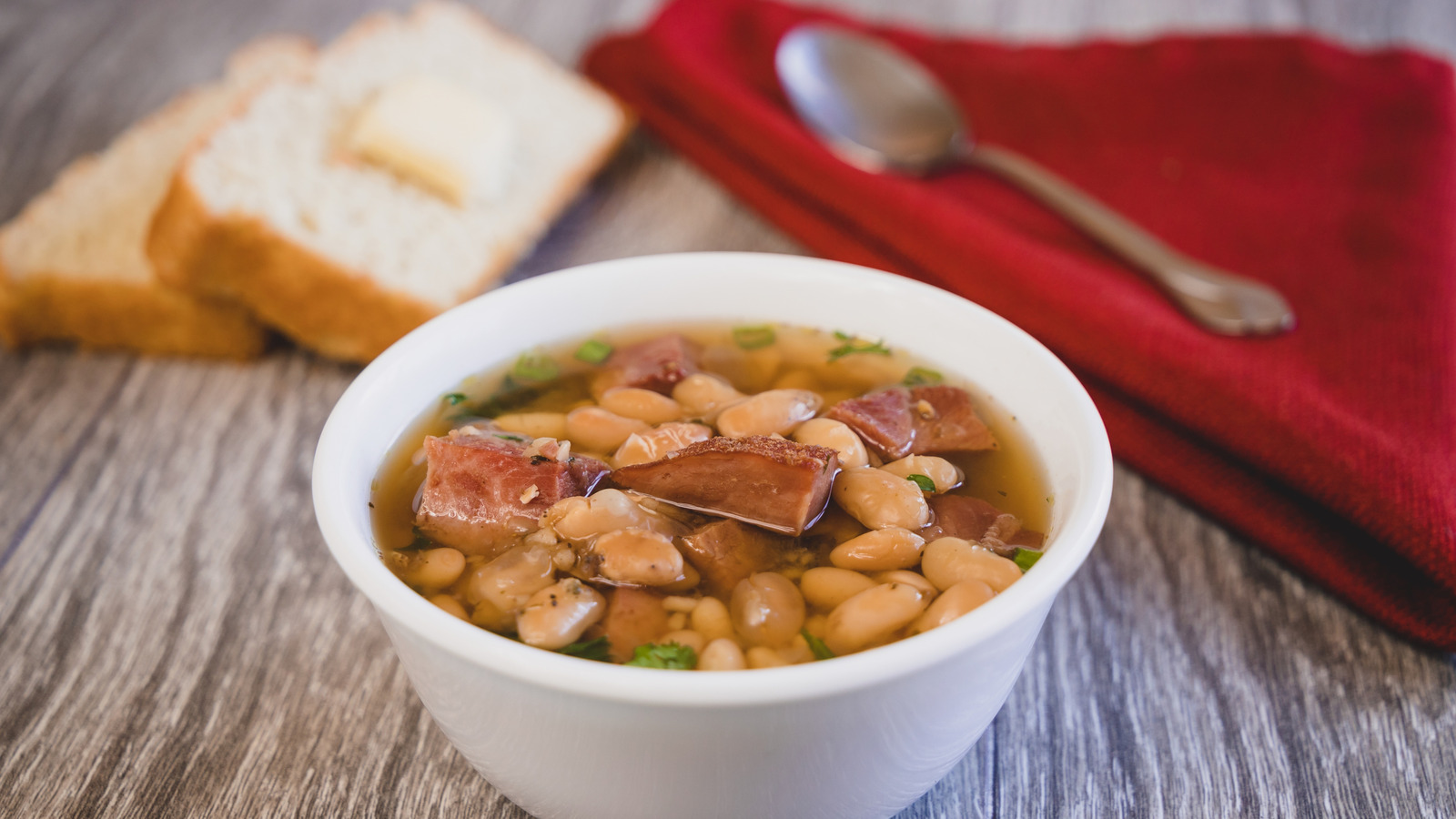
"Normally, that's when you pull out the cans of beans that have been sitting in the pantry. This shortcut is so convenient that sometimes we forget that the true star of a classic ham and bean soup is actually dried beans. Flavor depth, textural delight, and a homey comfort gathered in a bowl - it all starts with this ingredient."
"An overnight soak and hours of simmering might deter you from using dried beans, but rest assured, that time is well spent. Cooked with aromatics and spices, the beans' flavors are a slow build of depth and warmth, a far cry from the typical brininess you often get with canned beans. Those savory, herby notes sink right into the starchy beans, altogether coalescing into a rich base."
"You can blend a small portion to mix into the soup to thicken the texture, or play around with different types of beans to discover new nuances. Great Northern beans are quite a popular choice, dearly loved for their creamy softness and mildly nutty taste. That said, almost any type of white beans will work for a typical ham and bean soup. Cannellini beans are similarly amazing, although they can be a bit bolder."
Fall's cool air and wood smoke inspire a craving for steaming ham and bean soup. Dried beans, soaked overnight and simmered for hours with aromatics and spices, develop deeper, savory flavors and improved textures compared with canned beans. Slow-cooked beans absorb herby notes and meld into a rich broth base that complements smoky ham. Blending a portion of cooked beans can thicken the soup while different white bean varieties—Great Northern, cannellini, or pinto—offer varying creaminess, nuttiness, and earthiness. Properly handled dried beans transform a simple soup into a hearty, homey masterpiece.
Read at Tasting Table
Unable to calculate read time
Collection
[
|
...
]